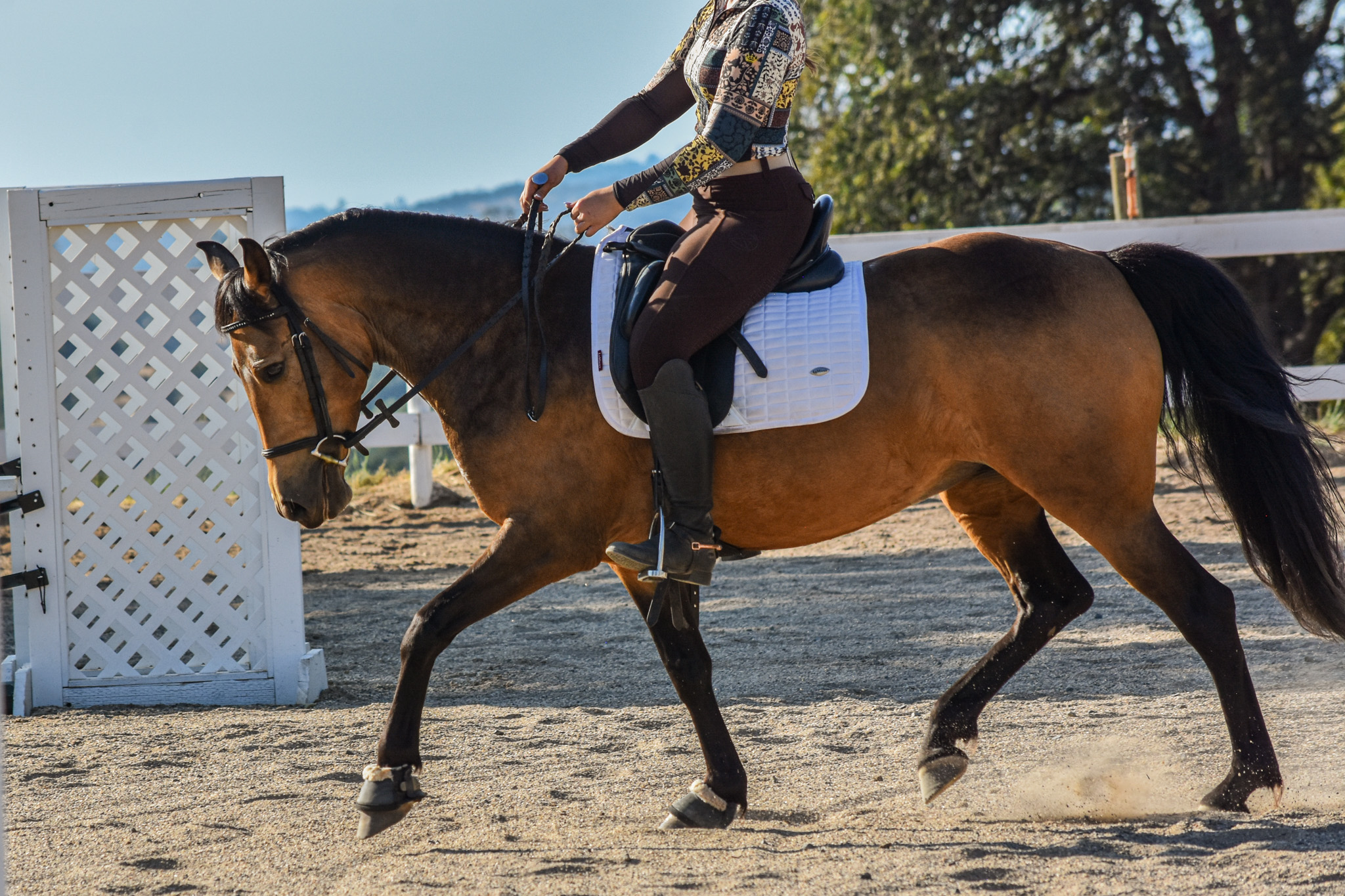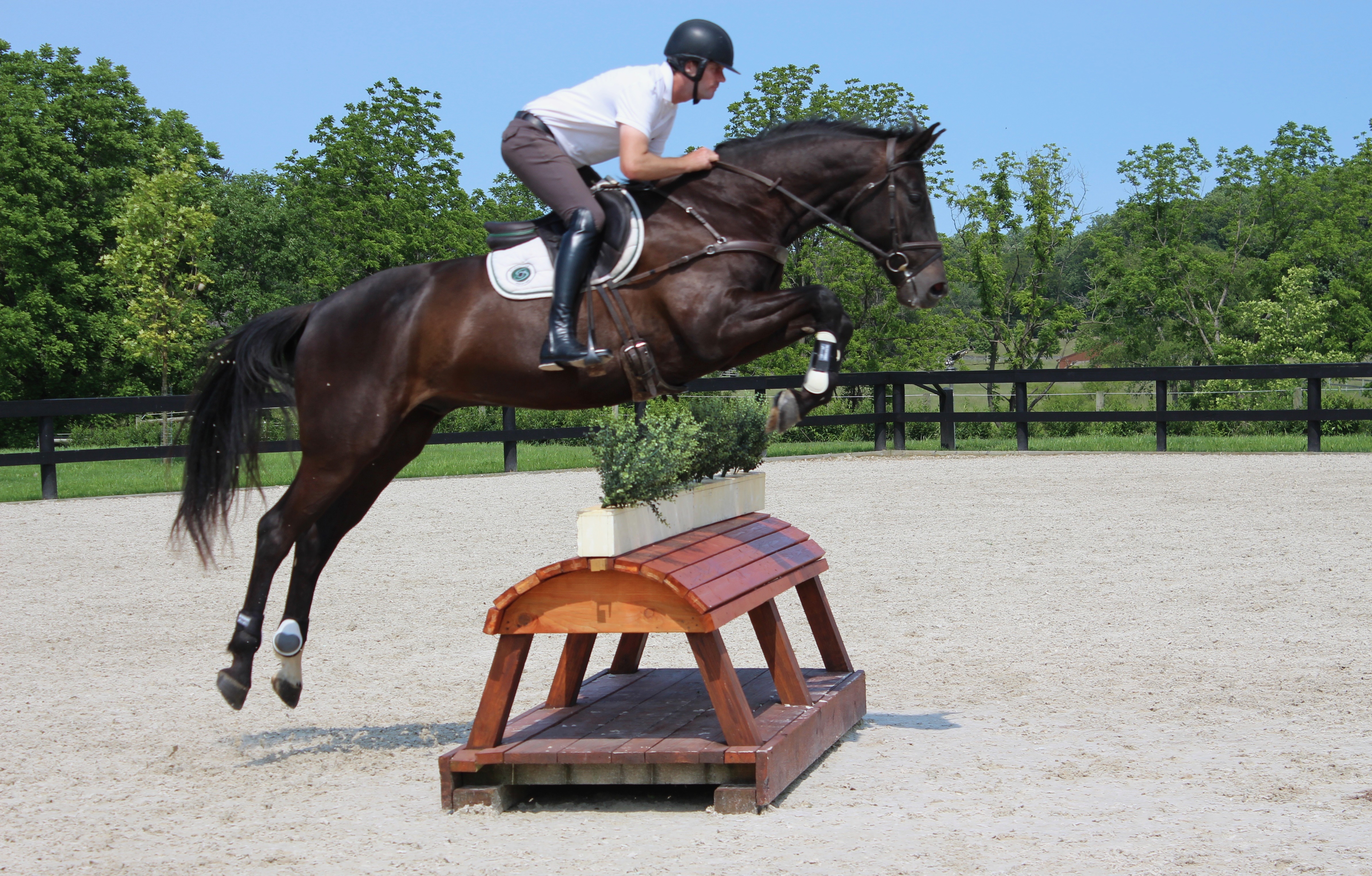“Why Does My OTTB (insert weird quirk here)?” Volume VIII
From Lauren:
This week, I got a bit wordy in my answers so the questions are few but the answers are extensive. Sit back, perhaps stock up on some milk and bread, and enjoy a little bit of a lengthy read that hopefully clarifies some of the muddy waters that the OTTB’s swim in (sometimes literally at rehab facilities, though those waters are usually crystal clear!).
–
Mr. Contrary is extremely right-leaded and basically falls apart on the left lead, if he even takes it at all. Can you explain the left/right lead thing on the track for me? Does the rider/jockey ask for the lead change on the track or does the horse have to do it naturally? (Compliments of EN reader Kristen Janicki)
All horses are taught to switch leads on the track differently depending on where they are broke, how naturally balanced/athletic they are, and whether or not they have a moron in the irons. When galloping at a slow rate of speed, I really don’t worry about leads. This is not the case when I am galloping strongly, breezing, or racing. Let’s assume a horse breaks at the top of the stretch and that they are running one full circuit around the track, finishing up at the wire in the middle of the stretch. They will ideally break on the right lead, change to the left lead in the first stride into the first turn, change to the right lead in the first stride out of that turn, change to the left lead in the next turn, and change back to the right lead at the head of the stretch. Has your horse every run in another country? The above is only applicable in the US and is reversed everywhere else. I have a horse in training right now that is very right lead dominant, will give me beautiful UL dressage flying changes but is nearly impossible to encourage to pick up the left lead from the trot. He raced overseas primarily AND has patellar ligament issues and resulting stifle pain. I assume you have ruled out any hock/stifle soundness issues that may come from bearing the extra weight on left hind in the upward transition and without a soundness issue, it may just be a balancing issue that he needs to work through. Riding green horses just being introduced to the track, I do not stress lead changes but will often use a wide turn and fatigue to encourage changes. Example: I may gallop two circuits around a 6f track (1 1/2 miles), start off on the left lead, and ask for the right lead change on the last straight away. Every day I will alter where I ask for the change and eventually will begin asking for more changes as they gallop faster. Riding young race horses preparing for their first races, to change from the right to the left say, I balance going into the turn and ask with a bit of outside leg (not much since I am riding quite short to the point only my heels touch the horse) and a gentle bump of the inside rein with a slightly upward inclination of about an inch at most. Riding races (was back in the day) and breezing my horses now, the changes are basically automatic. If they do not change coming to the last straight away (which is most likely to occur because of fatigue to the point that an extra moment of suspension seems like too much) I may give them a little tap with the whip on the inside but at that time I am riding too short to apply leg aids and do not want to jerk on their face for fear of unbalancing them. However, there are plenty of hack job morons that jerk them all over the place and beat them into an unbalanced way of going that basically forces or spooks them in to changing. Hope this helps!
–
Banrock has been in retraining for about 6 weeks. Prior to this, he has a year off after retiring from a million-dollar racing career including divisional honors in NY. During a recent hunter show hosted at our barn, I did just a bit of flat work in the warm up ring and he responded with, what I imagine, was his pre-race mental preparation. He wasn’t classically tense or nervous beyond reason but he responded with a sort of measured intensity that I was not going to interrupt by asking him to lower his head, soften to the bridle, or turn any smaller than an 80m circle. This response also involved calling to all the horses present to tell them he was the one to watch. I presume this will go away with experience, exposure and a lack of opportunity to actually race at these events. However some fun questions for your column:
Any tips on refocusing an OTTB who is distracted or confused about their job?
How long would you plan to warm up/desensitize an OTTB at their first show?
What would you guess is a time-frame for a horse that raced for 6 years to settle into a new job?
Any supplements you have found effective (and legal) at getting over this “show nerve” training hump?
Should I actually attempt to touch his stomach at some point or choose not getting my head kicked in? (Compliments of EN reader Robin Wherry)
Firstly, it is imperative that racehorses embrace the same amount of focus that you would want a jumper or a dressage horse to embody upon entering the ring. I ask all of my OTTB’s to pay attention to the rider, ignore outside stimuli, and attend to the job at hand. However, the difference for racehorses is that they have all of that time in the paddock walking around in hand to get their heebie jeebies out before they are saddled and led out to the track to get down to business. Upon introducing an OTTB to a show horse job, I will often take them to a schooling show or two without the intention of competing. I will then spend at least 30 minutes, sometimes an hour or longer, hand grazing, leading, and parading the horse around the show grounds, near the warm up, and near the competition ring if possible. If all goes well, I will then tack up and plan to school on the flat for 15-20 minutes with another 10 minutes of hacking afterward when appropriate and I will expect attention, obedience, and willingness…though of course there will be the occasional spook, shy, or nicker at times. I do ask them to be soft in the bridle and to perform patterns, 20m circles, serpentines, and transitions as appropriate for their level. If a crowded warm up is presenting a problem, I do try to find a small area away from the hustle and bustle to allow the horse to focus, even if at the walk. Sometimes, ear bonnets are helpful if the area is exceptionally noisy. I also carry treats or peppermints or some kind of reward for the end of the school and even occasionally intersperse rewards during the ride to positively reinforce the desirable behavior of the horse for focusing on me and not everything else. Horses that have have only started (raced) a couple of times or who have never raced at all despite being in training are often rather speedy in getting with the show horse program but I find that horses that have started 10 or more times are, in my experience, all typically the same when it comes to settling in to a new life. I think 6 months is the bare minimum for complete assimilation to showhorse-dom but do occasionally find OTTB’s who are ready to go to schooling shows and sometimes even compete BN/2’6/Training Level Dressage in 4-5 months if in consistent work and sound. I do not use any calming aids or supplements but I have a boarder (thank you, Kim Phillips!) who swears by raspberry leaves, especially for mares. When it comes to touching his belly, it will get better! Start with teaching “carrot stretches” as people call them, encouraging him to bend left and right to reach treats that you hold by his side near the girth without his feet moving. Once he is able to touch his barrel with his nose or thereabouts, stand well out of the way of flying hooves and gently start by caressing his girth area (or even his shoulder if he is REALLY sensitive) while feeding treats during his stretches. Then, progressively work your way back towards his belly and, in my experience, horses will learn to associate treats and positive reinforcement with touching in sensitive places and become, in essence, less sensitive….hopefully! With horses of all breeds, disciplines, personalities, and backgrounds, but especially with OTTB’s, I have found that an ample supply of treats and a repeated positive reinforcement program can achieve just about anything. Good luck!
–
I do hope that some of my answers to the questions above have demystified at least one of your OTTB’s strange quirks and I encourage you to send any further, horse-specific questions to me via email ( [email protected]) for more in-depth and on-point answers. The EN and COTH response has been great and I look forward to make more thought-provoking questions! Go Eventing and go gallop a (former) racehorse!






















